Total War: Warhammer 3 Immortal Empires is almost here, or at least the beta launch is. In a lot of ways, this is the definitive release for the third game in the series and the series as a whole, the endgame for an entire franchise that first began in 2016.
Over the last couple of weeks, I’ve spent dozens of hours trying out different factions in Immortal Empires, including going all the way back to some that haven’t been touched since the very first game. It feels strenuous to overstate just how much is here. With all three games and dozens of DLC packs combined — and more on the way — there are now 90 Legendary Lords to choose from if you’ve bought everything in the series so far, alongside hundreds of settlements to take and minor factions to conquer.
Not everything is perfect, and there are a few things I hope to see addressed fairly soon, but as developer Creative Assembly continues to release updates to this self-proclaimed “Phase 1” of Immortal Empires, I can see myself spending dozens upon dozens of further hours in this playground of conquest.
One world, six years in the making
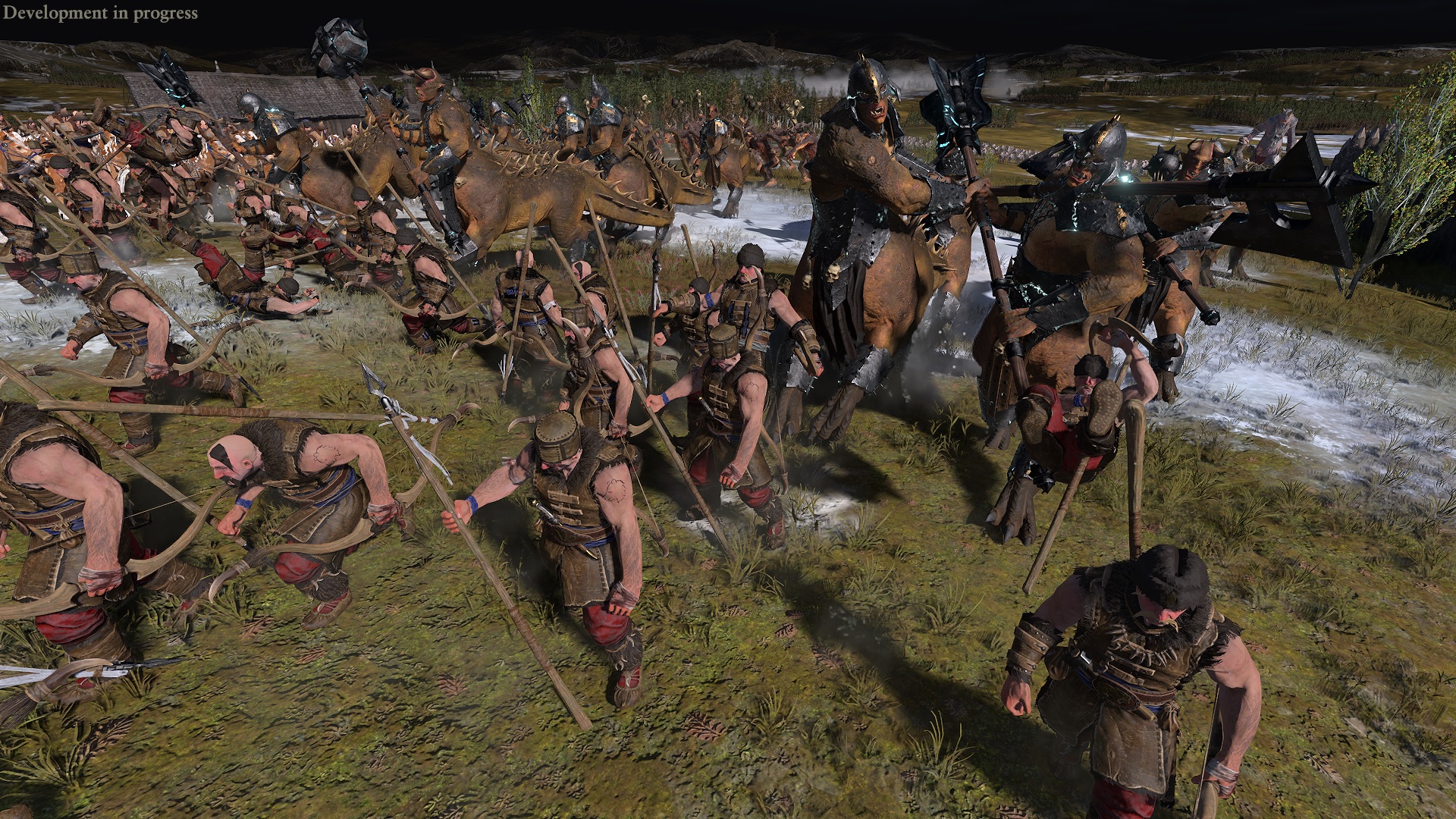
Immortal Empires is a combination of everything that’s been built in all of the Total War: Warhammer games. People can play all of the playable bits from all three games in the series — from factions to races — meaning it feels like the ultimate box of toys the tabletop setting was always meant to be.
With this impressive scope, it can be a bit overwhelming to try and grab everything in sight, so the different factions of Total War: Warhammer 3 and preceding games have had their victory requirements tweaked, making shorter victories more reasonable. Of course, if you want to start on one side of the map and conquer all the way to the other, you can do that more grandly than ever before.
Like the base launch of Total War: Warhammer 3, Immortal Empires also supports simultaneous co-op, so you can bring in some friends to team up or go head-to-head across the Old World and New World combined.
With up to eight-player support, you could even have two teams with various allegiances, or even a brawling free-for-all. It’s unlikely that certain Lizardman factions will encounter Cathay, but it’s no longer impossible. The possibilities here feel endless. Even in this early state, Immortal Empires is working hard to earn its name.
There have been a lot of changes, and it also coincides with a desperately-needed patch and DLC pack for the setting’s forgotten harbingers of doom. At long last, the Warriors of Chaos have received a huge overhaul, and it’s this faction that is also the focus of Total War: Warhammer 3’s newest paid DLC, Champions of Chaos, adding four new Legendary Lords for the long-maligned group.
At long last, the Warriors of Chaos burn bright
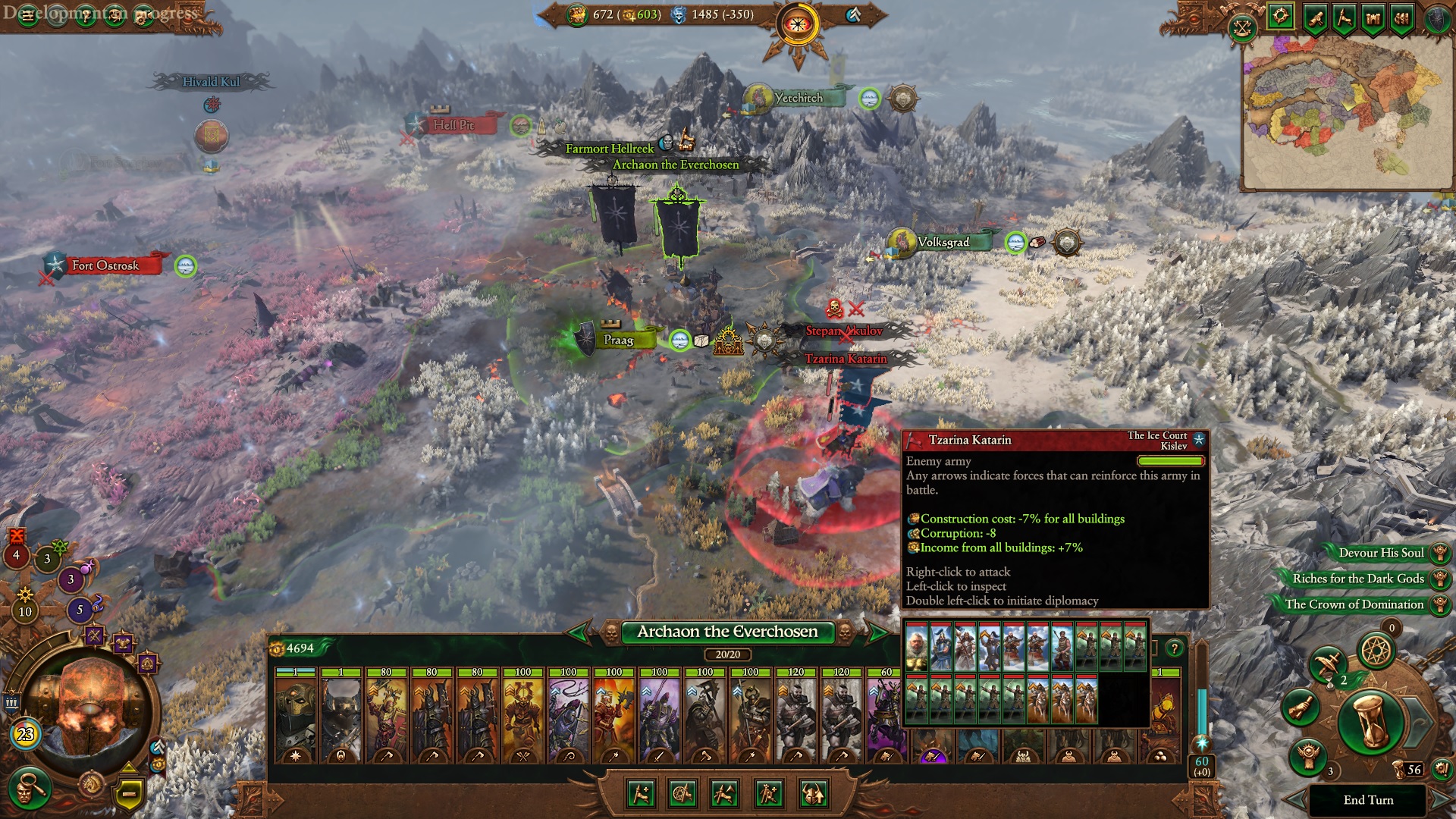
Naturally, each of the new Legendary Lords serves in homage to a particular Chaos god, meaning that there’s now a truly mind-boggling number of possibilities. You can devote yourself to a single Daemonic god, lead that god’s human followers, or attempt to wrangle the attention of all four dark primordials.
This comes by way of the new Dark Authority system, which essentially represents how the forces of Chaos hate each other almost as much as they hate anything that stands on the side of Order.
Different leaders in the Warriors of Chaos can access different units, and even if they can summon forces from all four Chaos gods, investing in certain technologies that benefit one god’s followers can alienate the others. As the forces of Khorne rise in strength in your lord’s army, the forces of Slaanesh weaken. It’s a delicate balancing act and one that makes for some fantastic role-playing regardless of the leader you choose.
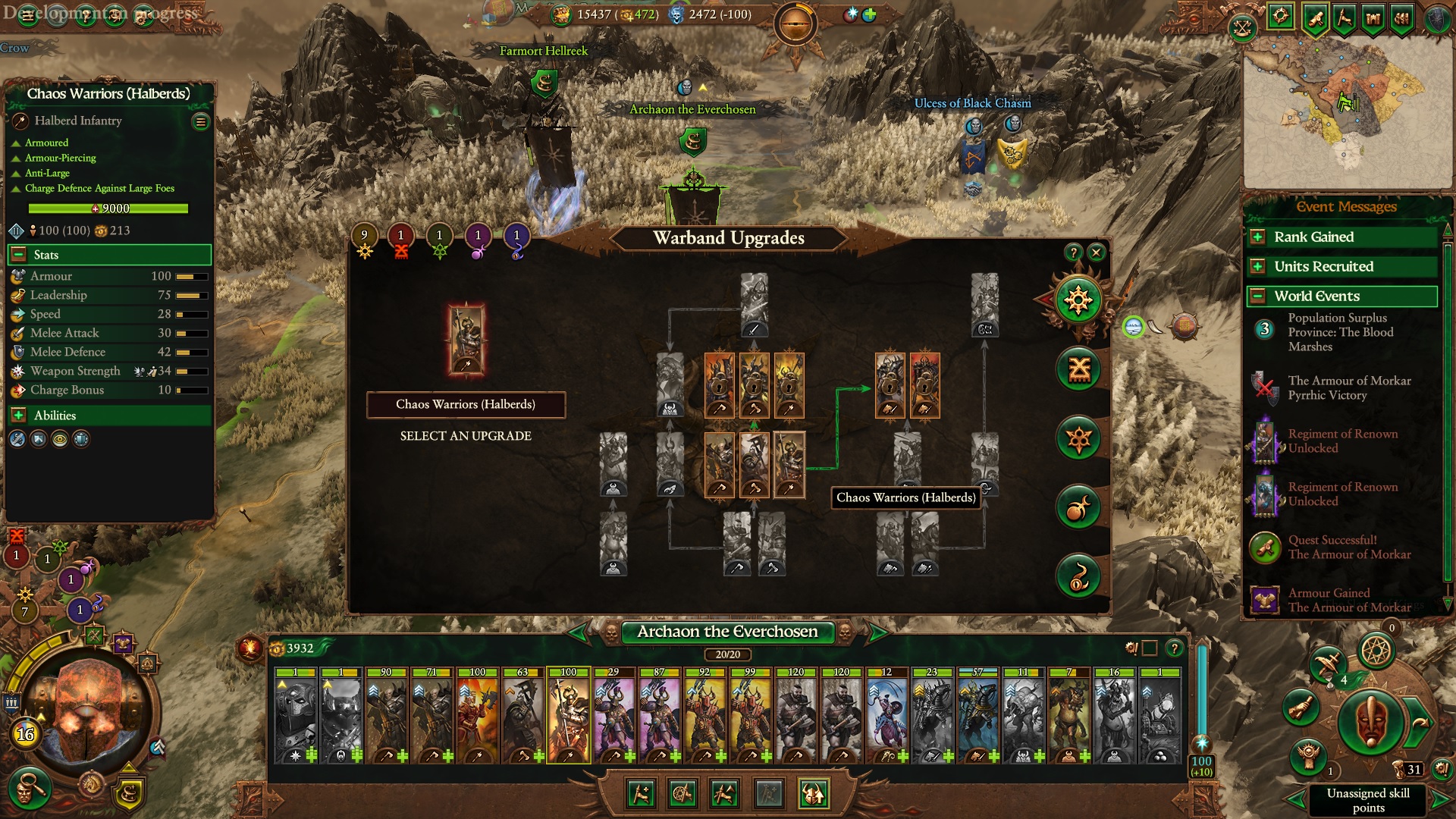
Another big overhaul for the Warriors of Chaos is found in the Warband Upgrades system. To represent how a select few human followers can be mutated and enhanced by Chaos, you can upgrade your troops directly on the march as they gain experience.
A handful of marauders in your early battles can become champions of Chaos Undivided by the time you burn through the civilized lands. I absolutely love this system; it truly makes you feel like your army is growing alongside your chosen herald of destruction. All of this means that the Warriors of Chaos have gone from one of my least-favorite factions to one I’m constantly thinking about.
Regardless of whether or not you step into the armored boots of Chaos, there are new challenges that weren’t present in Mortal Empires, the prototype mode for Immortal Empires from Total War: Warhammer 2.
To help make things feel fresh when players inevitably do start steamrolling the map, Immortal Empires introduces new endgame scenarios. Unlike the standard Chaos invasion that’s been around since the first game in 2016, these scenarios take a variety of forms, with massive Greenskin WAAAAAGHs or Dwarfs deciding to avenge the entire Book of Grudges at once. It’s a neat change of pace, and I look forward to seeing more added in the future, something the developers have already indicated will happen.
A big step, not the last step
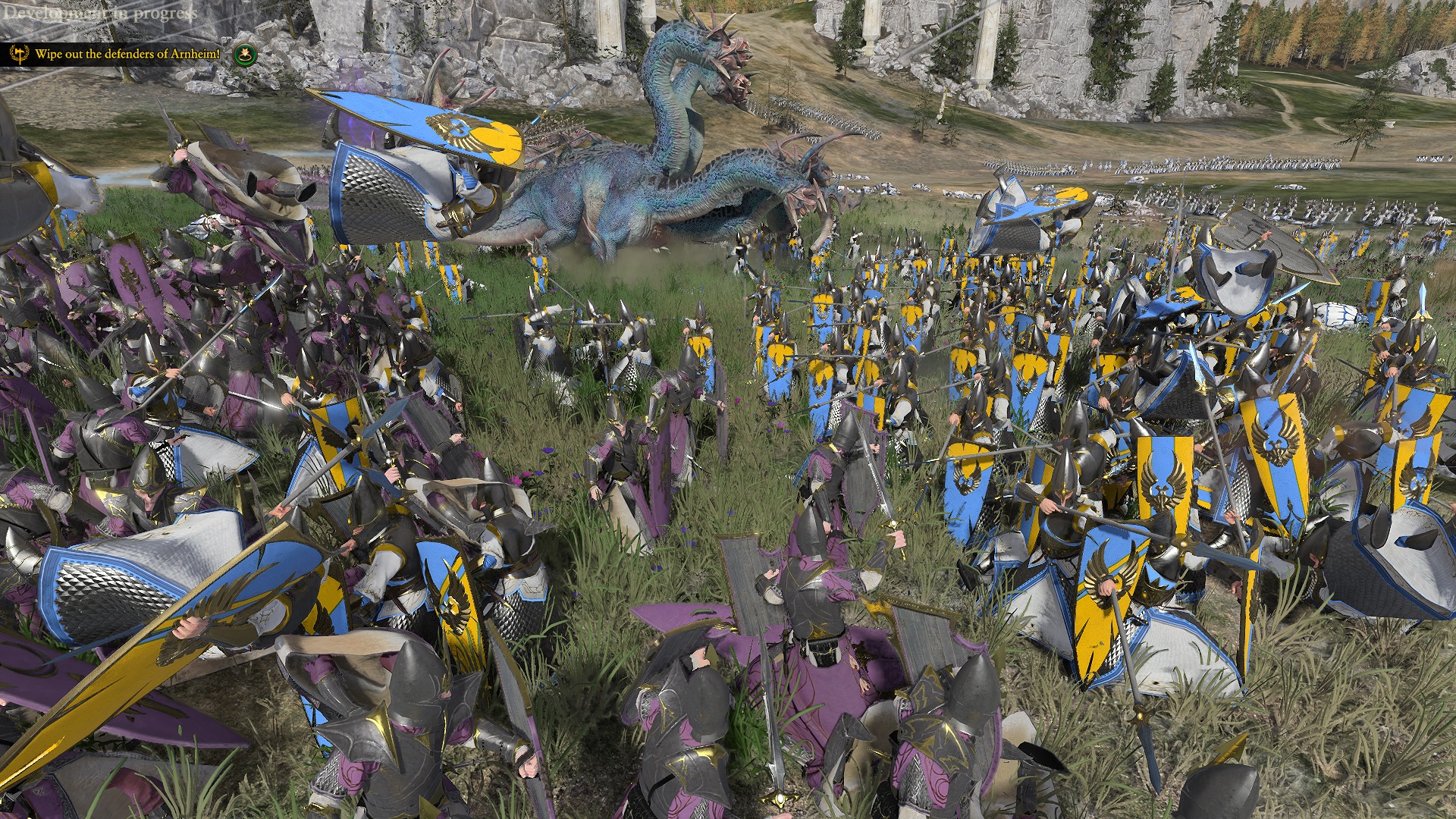
Not everything is perfect here, and there’s a very good reason that Creative Assembly is referring to this mode as a beta despite it being mostly complete content-wise. There are glitches and unfinished reworks across some of the different units, which makes sense since many of the game systems have evolved massively over time and some things just don’t work together.
Usually, these are fairly minor, with now-useless or redundant bonuses, but I did encounter one particularly grating problem playing as the Warriors of Chaos. There seems to be a behavioral issue where factions you are allied to will declare war on your vassals, then immediately sue for peace. Because you are required to aid your vassals, this means war coordination and using the Outpost system to recruit units for your ally’s pool can be needlessly dashed with no warning, requiring several turns to build up a trusted allegiance again. I completely understand that infighting, betrayal, and scheming are the name of the game when it comes to Chaos, but when this happens repeatedly, it just becomes exhausting.
Outside of that, the sorely-needed blood and gore effects were disabled in my game build, though Creative Assembly claims this option will be fixed by launch, alongside a bit of further polish to prevent potential crashing.
I also noticed a strange shimmering effect on a handful of units and textures, primarily in races that originated in Total War: Warhammer 2, like the High Elves. The developers have spoken at length pre-launch about how things in the beta need further polish, so I imagine these fall into that category.
Should you play Total War: Warhammer 3 Immortal Empires?
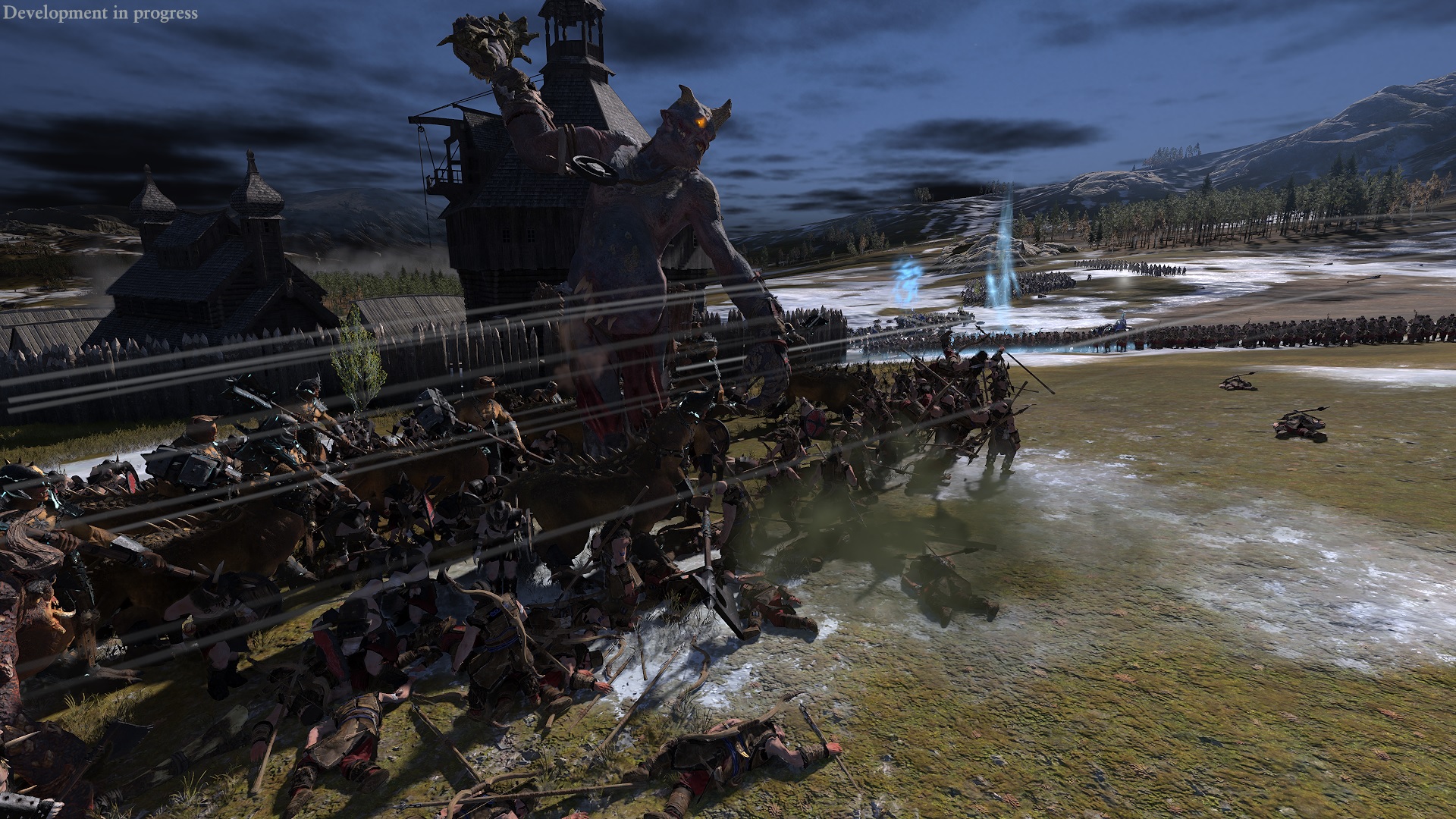
All in all, Immortal Empires is (mostly) an excellent experience that will be one of the best PC games for strategy fans. In many ways, it’s a dream come true for longtime fans. If you’re already invested in these games, diving into this beta is absolutely worthwhile.
If you’re new to this series, I do think it’s worth having a discussion about cost. After all, series veterans like myself have been collecting these games and DLC packs for years, but what if you’re an eager and curious newcomer?
Three full games and multiple DLC packs come out to hundreds of dollars if you buy everything at full price. I strongly recommend only grabbing Total War: Warhammer 3 — or trying it through PC Game Pass — then waiting for a sale on your chosen storefront and getting the other two main games and the many free DLC packs. From there, as you try out the different factions, you can decide if additional Legendary Lords and units are worth grabbing the corresponding paid DLC packs.
Across all these dozens of playable factions, innumerable game mechanics, tweaks, patches, and possibilities, the single word that continually comes to mind is ambition. Immortal Empires isn’t perfect, but the scale of Creative Assembly has largely succeeded in pulling off remains nothing short of astounding. As that ambition continues with more updates and more DLC, both paid and free, I’ll be playing for a long, long time to come.




